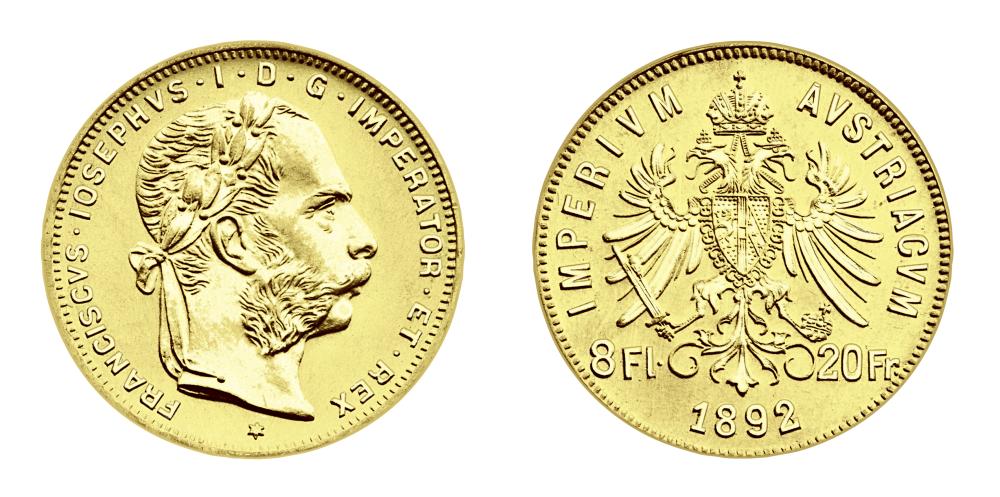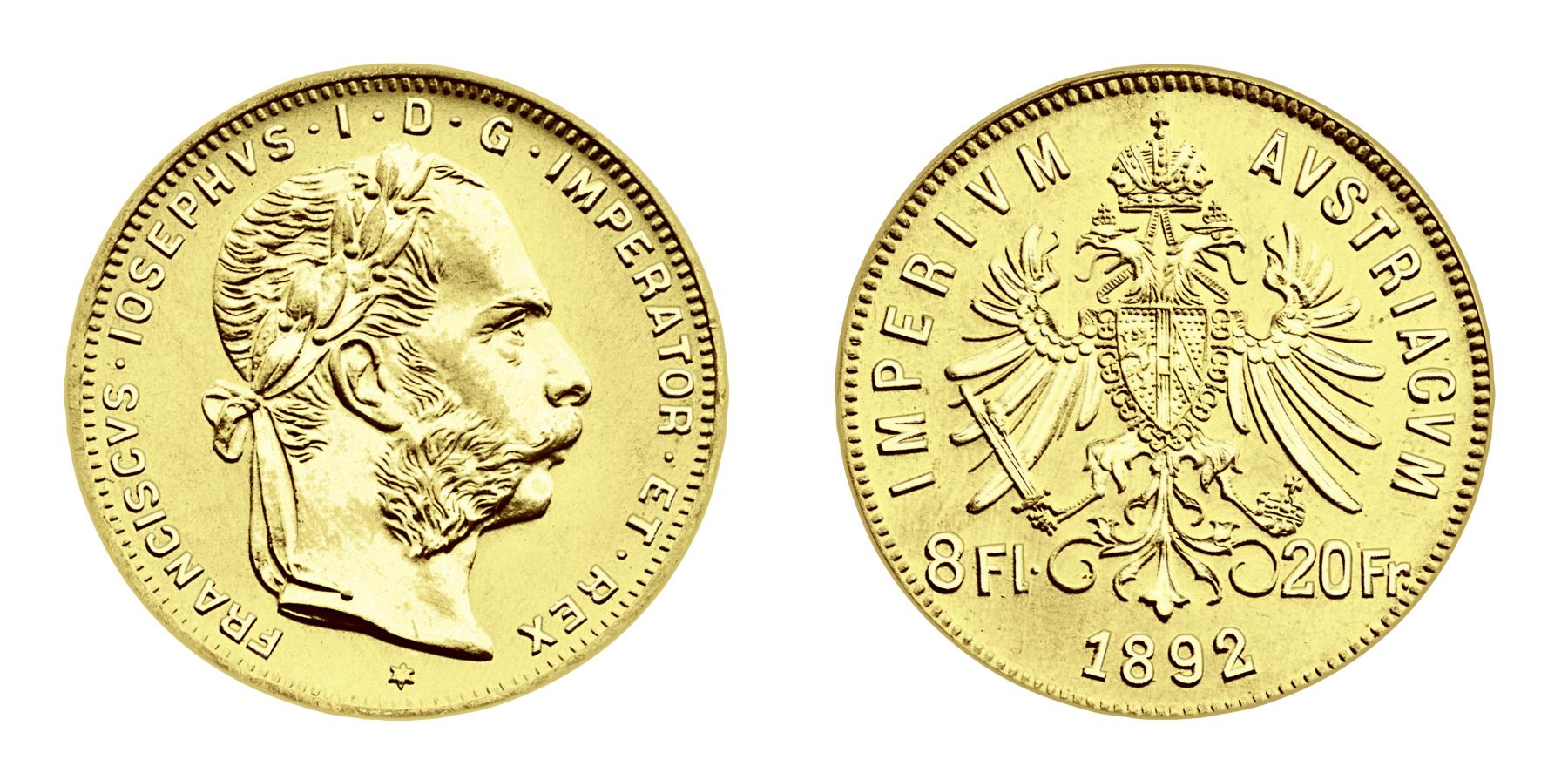Note: PreMeSec provides the metal value based on the market value of the precious metal for informational purposes only. PreMeSec.ch does not trade in precious metals itself. The price data is provided by third-party companies and updated several times an hour. PreMeSec.ch is not liable for the accuracy of the information and does not provide any trading or investment recommendations. Users of the trading platform are free to set their own prices; PreMeSec has no influence on these and accepts no liability.
Summary
- Eight florins are coins from the Austro-Hungarian period
- Eight florin coins are produced by the Austrian Mint.
- Eight florins are characterised by their high purity.
- Eight guilder restrikes are subject to VAT in Switzerland.
Introduction to the Austrian eight florins
The Austrian Mint produces restrikes of the historical eight florin coins. In addition to other historical restrikes, it also produces the Vienna Philharmonic bullion coin. In contrast to the historical coins, which have a high numismatic value due to their rarity, the restrikes are traded relatively close to their gold value.
According to Austrian law, only the Austrian Mint is allowed to produce these coins and must leave the fineness and weight exactly the same as the original old coins. One of these restrikes is the eight guilder coin. These coins were created in preparation for joining the Latin Monetary Union, which is why 8 Fl or 20 Fr is also stamped on the value side. The fineness of the gold thus corresponds to that of 20 Swiss francs or 20 francs.
The appearance of the eight florin coin
The obverse shows the head of the young Emperor Franz-Josef I crowned with a laurel wreath.
The portrait is surrounded by the inscription "FRANC ISCVS IOSEPHVS I D G IMPERATOR ET REX", which means "Franz Joseph I, by the grace of God Emperor and King".
The double-headed eagle of the Austro-Hungarian Monarchy can be seen on the reverse. The double-headed eagle bears the imperial crown as well as the sword and orb.
Above the eagle is the inscription "IMPERIVM AVSTRIACVM" Austrian Empire.
While the originals bear the respective year of issue below the double-headed eagle, the restrikes are labelled with the year 1892. After 1892, the guilder was replaced by the crown coin.
Historical eight florins
The historic eight florins have become very rare. They were minted from 1870 and were mainly used for customs payments. As a result, they were never in circulation as frequently as silver coins. In addition, many of the coins were lost due to wars, unrest and reparation payments to foreign countries and were melted down. As a result, the original coins are extremely rare today and their numismatic value significantly exceeds their gold value.
The Austrian Mint, maker of the eight florins
The Austrian Mint, the manufacturer of the Austrian gold coins, is considerably older than the eight florins. Its history and that of its predecessor institutions can be traced back to the 14th century. From 1918, it is the only mint for the Republic of Austria, which has existed since then. However, the Austrian Mint not only produces circulation coins and the Philharmonic, but also makes copies of coins from the Austro-Hungarian Empire for collecting and saving, for example guilders, crowns, ducats and the Maria Theresa thaler.
The Austrian Mint, which belongs to the National Bank, itself holds stakes in other companies, such as Argor-Heraeus, a precious metal refinery in Ticino, whose bars it also sells, until 2017.
Special tax features of the eight florins
The Austrian Mint's restrikes are among the few bullion coins that are not exempt from VAT in Switzerland. Although the coins are produced by a state-owned mint in accordance with legally defined standards, as the restrikes were not produced for payment transactions, they are not exempt from VAT under Swiss law. This is in contrast to their siblings, the Vienna Philharmonic coins, which have the character of means of payment due to their imprinted face value.
Image rights: © Austrian Mint
Register and sell 8 Gulden Österreich GoldTechnical data
Similar products






